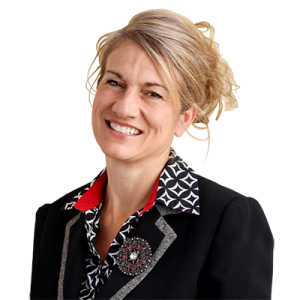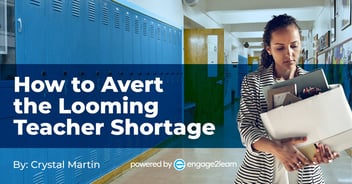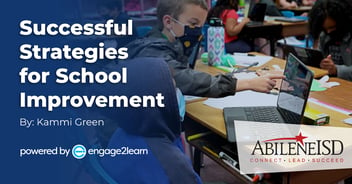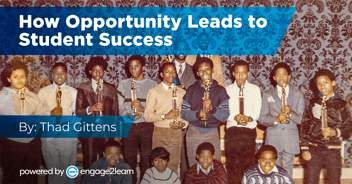A Call to Action: The Case for Public Education | engage2learn

At a breakfast on Saturday of TASB last weekend, I was once again inspired by a talk Dr. David Vroonland gave, declaring his support for public, community schools and referencing the original concept for these schools in the letters of Thomas Jefferson. We are approaching a tipping point in our nation’s educational history–a significant era during which we are making decisions about whether to continue to build upon the foundation of public education that our forefathers created for this country or not. These decisions have the propensity to impact millions of young learners, all of our communities, and the future of our country.
An economics professor from George Mason University recently penned an entire literature work, entitled The Case Against Public Education. But we think he is wrong; I think he is wrong. I choose to side with Thomas Jefferson: “Educate and inform the whole mass of people…they are the only sure reliance for the preservation of our liberty.”
My mission, and that of engage2learn, is to ensure that the neighborhood public school is the first choice for every family. I want to dissect that aspiration and explain our “why” for pursuing it tirelessly. Working backward, why did we use choice in our call to action? Why do we believe in school? Why is public school so important? Finally, why neighborhood public schools? Our call to action is a result of our beliefs which you can read more about in our e2L Strategic Design Framework.
My mission, and that of engage2learn, is to ensure that the neighborhood public school is the first choice for every family. Click To TweetWhy do we need to ensure that neighborhood public schools are the first choice for families?
People have choices, and options for schooling today abound. Healthy competition from both private and charter schools has been a wake-up call for public, neighborhood schools where the primary business has solely been education over the past century. These schools are now having to think differently about offerings, marketing, and modernizing the classroom learning experience.
Furthermore, school districts are not only being forced to innovate more quickly within the constraints of state and federal mandates but also through layers of bureaucracy. For me, personally, this was my first call to action and why I became a teacher. More than 25 years ago, I recognized that schools needed to become more personalized and individualized to meet the needs of all students and to ensure that students were able to discover and use their God-given gifts.
Specifically, I observed that while school worked for me (I graduated valedictorian from Ingleside High School), my sister, who had a very different learning style and tremendous creativity, dropped out, even though we shared the same IQ! At e2L, we want families who now have other options to choose public, neighborhood schools because they have evolved to become the best choice for each and every learner. Daniel Pink asserts, “Greatness and nearsightedness are incompatible. Meaningful achievement depends on lifting one’s sights and pushing toward the horizon.”
At e2L, we want families who now have other options to choose public, neighborhood schools because they have evolved to become the best choice for each and every learner. Click To TweetWhy School?
There are a multitude of reasons why we need school, yet determining the purpose of education remains a long-heated debate. However, I am unclear as to why we debate “the” reason. Those 16,000+ hours of schooling can, and should, be about more than just one thing. A few such outcomes include enhancing one’s quality of life, broadening of the mind, socialization, educated citizenry, preparation for life, and driving the economic engine.
Could our current education system better address these noble and worthy causes? Sure. Do we have ample proof that public education to date has met these goals? Absolutely. Here are just a few data points. Just recently, the Department of Education reported the adjusted cohort graduation rate (ACGR) for public high school students at an astounding 84 percent–the highest rate since this data was first measured (source).
Moreover, the number of public high school graduates is projected to increase between the 2005-2006 academic year (the last year of true data) and 2018-2019 by nine percent, while private school graduation rates are projected to decline, according to the National Center for Education Statistics (source).
Lastly, the American GDP is surging at the highest rate since 2014, indicating a healthy, robust economy that has propelled the United States into the top three countries with the highest percentage of entrepreneurs globally. The Global Entrepreneurship Monitor (GEM) puts it simply: “A business startup is directly linked to human capital resources, which include education, experience, attitudes, beliefs, and perception.”
Do we currently have a better solution for meeting any or all of these critical goals for every citizen in this country? No. Do we need to continue to iterate and improve our system over time to ensure we can better meet students’ needs as the context rapidly changes? Yes! F. Scott Fitzgerald once said, “The test of a first-rate intelligence is the ability to hold two opposed ideas in mind at the same time and still retain the ability to function.” It seems that is what we have been missing in this debate about school today! Can we hold these two opposing ideas in mind that school is serving its purpose yet still needs to be improved? At e2L, we believe that leaders have a moral obligation and an amazing opportunity to continuously create K-12 public education in America. And, there are many organizations and individuals making that happen every day.
Why Public Education?
Free, public education for each and every person in our country might be the greatest gift of our founding fathers. In the letter Thomas Jefferson wrote to John Tyler in 1810, he stated that he had “two great matters at heart without which no republic can maintain itself in strength.” The first one was, “That of a general education to enable every man to judge for himself that which will secure or endanger his freedom.” Dr. Vroonland refers to this concept as the ability to be a “self-determinate adult,” and it is critical to each individual and to our nation as a whole. We are still in a long-enduring struggle to make higher education more accessible to everyone and to ensure that all K-12 students have access to a quality education to be sure. Yet, if only the people who possess the means to pay for education can have education, we revert to a time that denies the masses the opportunity and access to those aforementioned reasons that we have school in the first place, which would be detrimental to us all.
In this country, we believe all people deserve equity in the expectations for their success, and at e2L, we believe all people deserve equity in the learning experience to develop the life ready skills, confidence, hope and wisdom… Click To TweetIn this country, we believe all people deserve equity in the expectations for their success, and at e2L, we believe all people deserve equity in the learning experience to develop the life ready skills, confidence, hope and wisdom to thrive. Acclaimed author Karin Chenoweth of Its Being Done: Academic Success in Unexpected Schools recently lamented on social media: “We are on a fool’s errand if we expect individual teachers working in isolation to produce miracles. Only by marsharling the full power of schools as institutions can we expect all children to learn no matter what their backgrounds.”
Why Neighborhood?
In the letter mentioned above by Thomas Jefferson, his second great matter at heart to preserve the strength of the republic was, “To divide every county by hundreds, of such size that every child of each will be within reach of a central school in it.” At its inception, public education was intended to reside in communities, in neighborhoods, with each classroom a microcosm of society at large. At engage2learn, we partner with public schools to prepare every learner for life beyond those school walls. Research, intuition, and our experiences all align to teach us that the school and the community have a symbiotic relationship. When schools thrive, the community thrives, attracting more people who, in turn, will enhance the health of the community even more. When schools are failing or losing enrollment, the surrounding community also suffers and eventually deteriorates…a vicious, downward spiral negatively impacting the school and, most critically, young learners.
Call to Action
Ironically in this debate on schools, public opinion polls show that the majority of people believe the education system as a whole is “broken,” yet they still trust and believe in their public, neighborhood schools, rating them “successful.” In fact, the Phi Delta Kappa Gallup Poll demonstrates that nearly 71 percent of citizens have trust and confidence in the men and women teaching our public school children. Although it is rarely reported, the good news is that public, neighborhood schools are thriving! I have personally seen amazing increases in achievement, culture shifts, engagement, and incredible progress in very challenging contexts among large, urban districts over the past few years. Just look at what is happening in El Paso ISD, Fort Worth ISD, Mesquite ISD, Arlington ISD, and Dallas ISD.
Educators, community members, and business leaders alike are collaborating to make these miracles happen for the good of every learner and family, as well as for the collective good of our citizenry. The future is bright! The call to action is to act and speak intelligently about this cause. Let’s hold these two opposing truths in mind simultaneously as we all work to continuously innovate our public education system, while also acting and communicating with integrity and keeping the best interest of every learner and every community in our minds and hearts.



